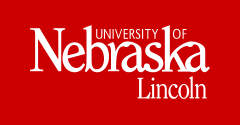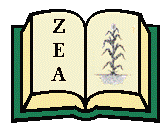-

Dictionary of Invertebrate Zoology
Mary Ann Basinger Maggenti, Armand R. Maggenti, and Scott Gardner
An exhaustive dictionary of over 13,000 terms relating to invertebrate zoology, including etymologies, word derivations and taxonomic classification. Entries cover parasitology, nematology, marine invertebrates, insects, and anatomy, biology, and reproductive processes for the following phyla: Acanthocephala Annelida Arthropoda Brachiopoda Bryozoa Chaetognatha Cnidaria Ctenophora Echinodermata Echiura Entoprocta Gastrotricha Gnathostomulida Kinorhyncha Loricifera Mesozoa Mollusca Nemata Nematomorpha Nemertea Onychophora Pentastoma Phoronida Placozoa Platyhelminthes Pogonophora Porifera Priapula Rotifera Sipuncula Tardigrada.
doi:10.13014/K2DR2SN5
-

Increase Mather: The Foremost American Puritan
Kenneth B. Murdock
The classic biography of preeminent colonial Massachusetts minister and President of Harvard College, Increase Mather (1639-1723). This is the work that re-started Puritan studies in America.
“A book which will be indispensable to students of early American history.” —Times Literary Supplement
“It is a book to welcome and appreciate.” —American Historical Review
“The available sources have been used carefully, and the story is told with great literary skill.” —The Sewanee Review
“[Murdock’s book] opened the sluice gates to powerful streams of scholarship that in the next two decades revised our understanding of American Puritanism.” —Philip F. Gura, in A Concise Companion to American Studies
-

'Farewell' Address to the People of the United States, Announcing His Intention of Retiring from Public Life at the Expiration of the Present Constitutional Term of Presidency
George Washington
President George Washington’s farewell address “To the People of the United States” was delivered to the public through the medium of the Philadelphia Daily Advertiser newspaper and was immediately reprinted in other newspapers and in pamphlet form throughout the country, and in England, Ireland, and Scotland as well. All contemporary editions derived directly or indirectly from the Daily Advertiser newspaper source.
The composition of the address was a collaborative effort, with James Madison co-authoring with Washington an early draft that was reviewed and revised at least twice to incorporate suggestions by Alexander Hamilton. The final draft, in Washington’s handwriting, was submitted to Timothy Pickering and others in the Cabinet before being given to the printer.
Washington’s “farewell address” emphasizes the importance of Union, the danger of partisanship, the threat of parties allied to foreign countries or interests, the accomplishment of a national government, the precedence of national over sectional interests, the maintenance of the public credit, the avoidance of large military establishments, and the overall momentousness of the American experiment in democracy. Throughout the address Washington demonstrates the restraint, modesty, and humility that—combined with his personal judgment, honesty, steadfastness, commitment to the republic, and devotion to the idea of liberty—made him so deeply reverenced by his contemporaries and by fellow-citizens for centuries to come.
-

The Constitutions of the Free-Masons (1734). An Online Electronic Edition.
James Anderson A.M., Benjamin Franklin, and Paul Royster (editor & depositor)
This is an online electronic edition of the the first Masonic book printed in America, which was produced in Philadelphia by Benjamin Franklin in 1734, and was a reprint of a work by James Anderson (who is identified as the author in an appendix) printed in London in 1723. This is the seminal work of American Masonry, edited and published by one of the founding fathers, and of great importance to the development of colonial society and the formation of the Republic. The work contains a 40-page history of Masonry: from Adam to the reign of King George I, including, among others, Noah, Abraham, Moses, Solomon, Hiram Abif, Nebuchadnezzar, Augustus Caesar, Vitruvius, King Athelstan the Saxon, Inigo Jones, and James I of England. There are extended descriptions of the Seven Wonders of the World, viz. 1) the Great Pyramid, 2) Solomon’s Temple, 3) the City and Hanging-Gardens of Babylon, 4) the Mausoleum or Tomb of Mausolus, King of Caria, 5) the Lighthouse of Pharos at Alexandria, 6) Phidias’s statue of Jupiter Olympius in Achaia, and 7) the Colossus at Rhodes (although some maintain the 5th is the Obelisk of Semiramis). It is a celebration of the science of Geometry and the Royal Art of Architecture, as practiced from ancient times until the then-current revival of the Roman or Augustan Style. “The Charges of a Free- Mason” and the “General Regulations” concern rules of conduct for individuals and of governance for Lodges and their officers. The work also includes five songs to be sung at meetings, one of which—“A New Song”—appears in print for the first time and may have been composed by Franklin. The document suggests that Masonry, in its modern Anglo-American form, was rooted in Old Testament exegesis (“So that the Israelites, at their leaving Egypt, were a whole Kingdom of Masons, … under the Conduct of their GRAND MASTER MOSES”) and in contemporary Protestant ideals of morality, merit, and political equality.
-

Four English Histories of the Pequod War
P. Vincentius, John Underhill, Lion Gardener, and John Mason
P. Vincentius, A True Relation of the Late Battell fought in New England, between the English, and the Salvages : With the present state of things there (1637)
John Underhill, Newes From America; or, A New and Experimentall Discoverie of New England; Containing, a Trve Relation of Their War-like proceedings these two yeares last past, with a Figure of the Indian Fort, or Palizado (1638)
Lion Gardener, Relation of the Pequot Warres [1660]
John Mason, A Brief History of the Pequot War: Especially of the memorable Taking of their Fort at Mistick in Connecticut in 1637 (1736)
Most books are available in paperback print editions at https://www.lulu.com/spotlight/unllib
Printing is not supported at the primary Gallery Thumbnail page. Please first navigate to a specific Image before printing.

